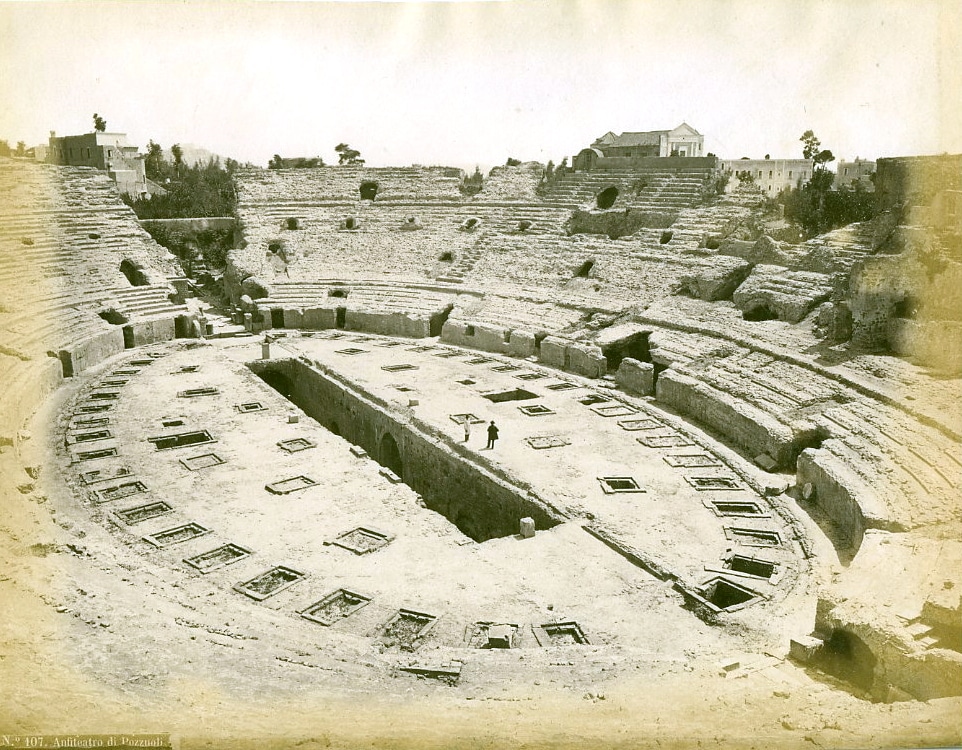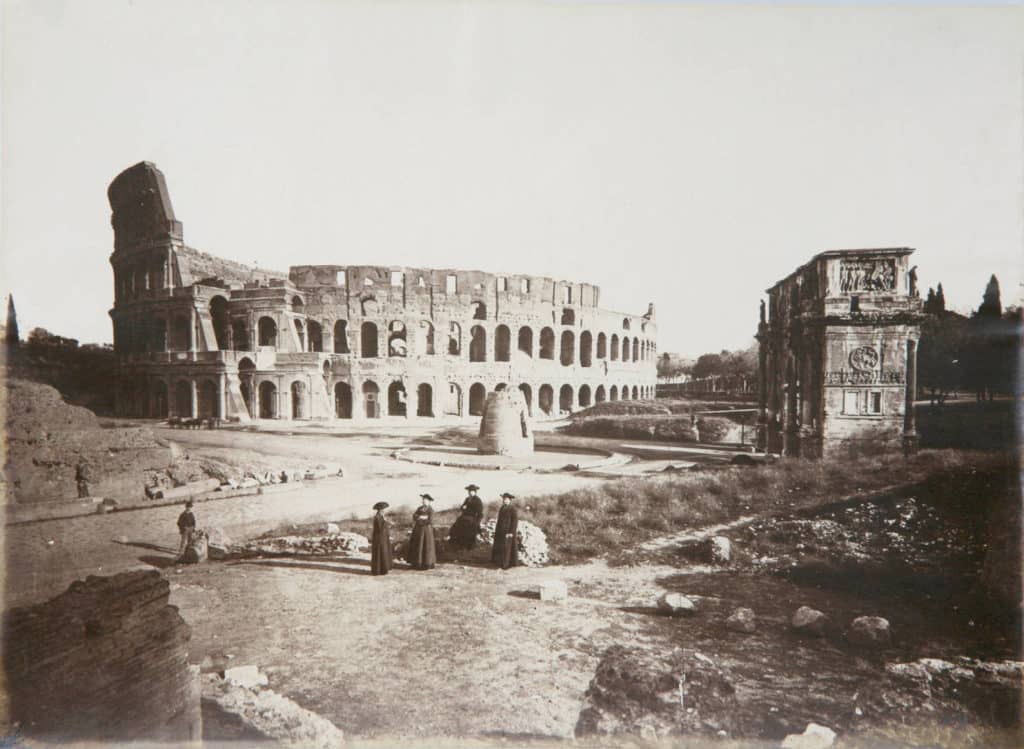The 2000 film directed by Ridley Scott, Gladiator, almost single-handedly resurrected the epic historical drama film genre, one which had been highly popular in the 1950s and 1960s but which had declined after that.
As one would expect, the story is about a gladiator, Maximus Decimus Meridius, who ends up fighting in the Colosseum in the city of Rome during the reign of Emperor Commodus. And it is fitting that it should have been based here because when we think of the gladiatorial combats throughout Rome’s centuries-long history, we do think of the Colosseum.
But both of these assumptions are incorrect, for this structure was built only quite late in Rome’s history and wasn’t known as the Colosseum at all. So here we explore the somewhat misunderstood history of the Flavian Amphitheatre.

Amphitheaters in Republican and Early Imperial Rome
The exact origins of the gladiatorial contests in Rome are somewhat unclear. However, according to the Roman historian Livy, the first such ‘games’ were held around the time of the First Punic War against Carthage outbreak in 264 BC.
This fact would accord with a dramatic increase in the number of slaves brought to Rome, which would have allowed their use as gladiators.
Whatever the exact date of origin, we know that these contests were a staple of Roman society by the second century BC. However, there was no massive amphitheater like the Flavian Amphitheatre to hold these contests. Instead, a series of temporary structures made of wood emerged in the city’s center.
These gave way in 29 BC to the Amphitheatre of Statilius Taurus, a victorious general and ally of the soon-to-be Emperor Augustus. This was built on the site of the Campus Martius in central Rome, but it too was not a large amphitheater.

Thus, in the first century AD, two Roman emperors, Caligula and Nero, began erecting new amphitheaters on Campus Martius, but work on Caligula’s was stopped following his deposition and murder in 41 AD.
Nero’s amphitheater, while completed, was made of wood and still insufficient for the number of people who wished to attend the gladiatorial combats in the city.
Emperor Vespasian and the Building of a New Amphitheatre
This all changed in 69 AD. Nero had been overthrown the previous year, and after a civil war in which three other emperors had quickly claimed power, Vespasian became emperor in 69 AD.
Just as corporations build skyscrapers today, Roman emperors erected grand buildings in Rome to signify their power in imperial times.
Having seized control of the empire, Vespasian quickly decided he would build a vast new arena in Rome, surpassing all others. Work began on it sometime around 72 AD. However, it would take nearly a decade to construct.
The new massive structure differed from previous Roman amphitheaters in that it was made of stone instead of wood. It stood 189 meters by 156 meters wide and rose four stories in height. Moreover, the vast structure was built with eighty different entryways.
This meant that the 50,000 people who could fit into the amphitheater could enter and exit quickly. This system is replicated today in all football and other sporting stadiums worldwide.
Moreover, its aesthetic limestone exterior and many decorations made it an imposing building in central Rome and a clear expression of the power of the new imperial dynasty.
However, Vespasian never lived to see it completed. Shortly before it was finished, he died in 79 AD. His son and successor, Emperor Titus, opened it with 100 days of gladiatorial contests in 80 AD. It was known as the Flavian Amphitheatre, after the Flavian Dynasty, which Vespasian had founded, not the Colosseum.
The Flavian Amphitheatre
The Flavian Amphitheatre was central to Rome’s history after that. It was expanded on several occasions so that it may have been able to hold upwards of 75,000 people at its height.
Emperor Domitian also added a series of tunnels underneath the theatre to house the gladiators and animals. Over the next several centuries, they held gladiatorial contests, animal battles, and even recreations of naval battles where they turned the arena into a small lake.

And Emperor Commodus did fight here, though he was not killed on the sands of the Flavian Amphitheatre, as depicted in the film Gladiator. Still, he was strangled to death in his bathtub by a wrestler on orders from his mistress, Marcia.
Commodus’s death ushered in a period of immense instability in Roman history, where a new civil war presaged the crisis of the third century, a period in which dozens of emperors reigned between the 230s and the 280s.
The amphitheater did not fare well during this time either and was badly damaged by a fire in the early third century. It was not repaired for several decades.
Moreover, the rise of Christianity saw many people question the morality of the gladiatorial contests. As a result, beginning with Emperor Honorius in 399, they were banned temporarily on several occasions during the late fourth and early fifth centuries.
Curiously, the fall of the Western Roman Empire in 476 AD and the rise of the Ostrogothic Kingdom of Italy did not see the gladiatorial contests die out entirely, and the Roman aristocracy continued to hold games during the sixth century periodically.
The Colosseum
Eventually, the gladiatorial contests faded into oblivion altogether. But the building in which they were held for half a millennium still towered over Rome.
It experienced a transformation during the Middle Ages. First, a small chapel was built inside it in the late sixth century. It also temporarily, and appropriately enough, served as a cemetery.
During the Middle Ages, it became more commonly known as the Colosseum, a name conferred on account of its ‘colossal’ size. However, it is possible that the name was used colloquially as early as the second century AD.
In the High Middle Ages, parts of the building were rented out as workshops and even dwelling places to Rome’s residents. However, disaster struck in 1349 when a great earthquake damaged much of Rome at this time.
Much of the southern side of the Colosseum collapsed during this, and the damage was compounded in the following centuries. People began to remove other parts of the building and use the stone to erect buildings elsewhere in Rome.
This process only ended in the eighteenth century when the work of historical preservation commenced. As a result, today, the Colosseum, which started nearly two millennia ago as the Flavian Amphitheatre, is one of Rome’s and Italy’s most popular tourist attractions and was recently named one of the New Seven Wonders of the World.

